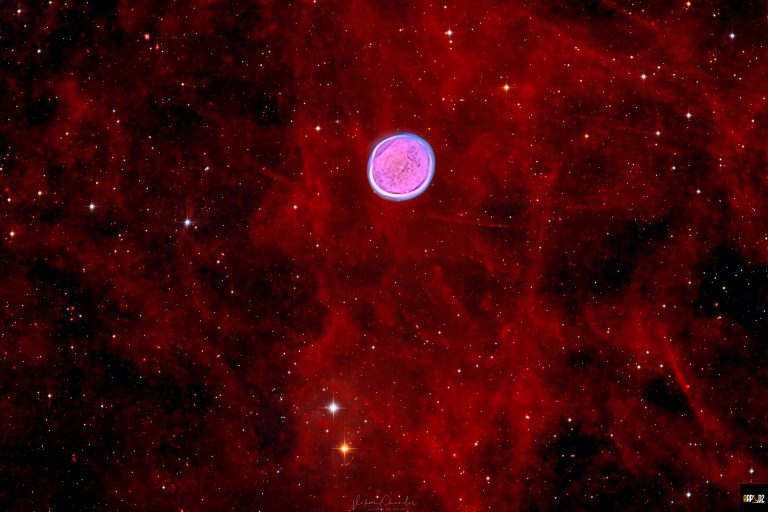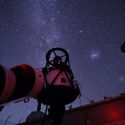Vikas Chander Astrophotography

Southern Owl Nebula
ESO 378-1
Telescope : Planewave CDK 24
Camera : Moravian C5A-100
Mount : Planewave L-600
Focal length : 3974mm
Fov : 38 x 29 arcmins
Image Scale : 0.39 arcsec/pixel
Observatory : Obstech Chile
Filters: Chroma
R 100x300s G 101x300s B 102x300s
Ha 101x600s Oiii 102x600s
Integration: 59h05m
RA: 11h 26m 40s
Dec : -34° 17′ 51″

This extraordinary bubble swimming in a glowing red sea of hydrogen may appear supernatural and mysterious to most, but it is a familiar astronomical object, a planetary nebula. Planetary nebulae are created by the ejected and expanding gas of a dying star and although they are brilliant and intriguing objects in the initial stages of formation, these bubbles fade away as their constituent gas moves away and the central stars grow dimmer. Like all planetary nebulae, the Southern Owl Nebula, (scientific name ESO 378-1), is relatively short-lived, lasting only a few tens of thousands of years, compared to a typical stellar lifetime of several billion years. Located in the constellation of Hydra (The Female Water Snake), it’s informal name relates to its visual cousin in the Northern Hemisphere, M97 or the Owl Nebula…
© Vikas Chander All rights reserved Copyrights
